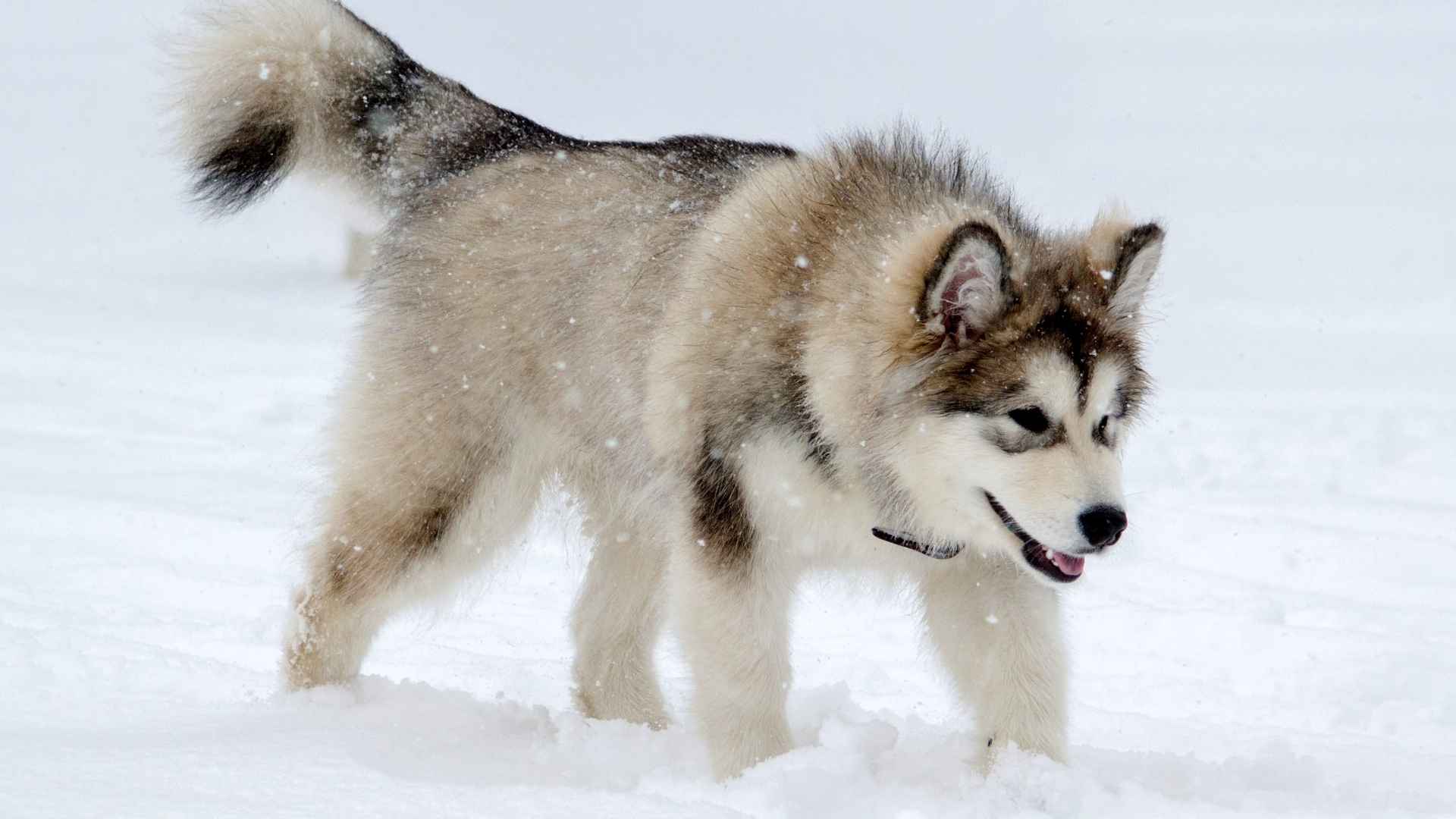Some dogs were simply made for snow days! While many pups would rather curl up by the heater, snow dog breeds come alive when the temperature drops. With thick, fluffy coats and a natural love for icy adventures, these cold-loving canines were bred to thrive in the chilliest of climates.
Whether you’re hiking snowy mountains, skiing through powder, or just enjoying a brisk morning walk, these dogs are happiest with frost on their whiskers and snow under their paws.
But don’t let their tough exteriors fool you—many of these breeds also come with curious personalities and strong prey drives, which means keeping them safe outdoors is a must. From tiny snow hounds to majestic mountain dogs, there’s a winter-ready pup for every kind of snowy adventure.
So, if you’re looking for a four-legged companion who won’t mind the cold (and might even love it more than you), you’re in the right place!
Winter Dog Breeds
1. Alaskan Malamute
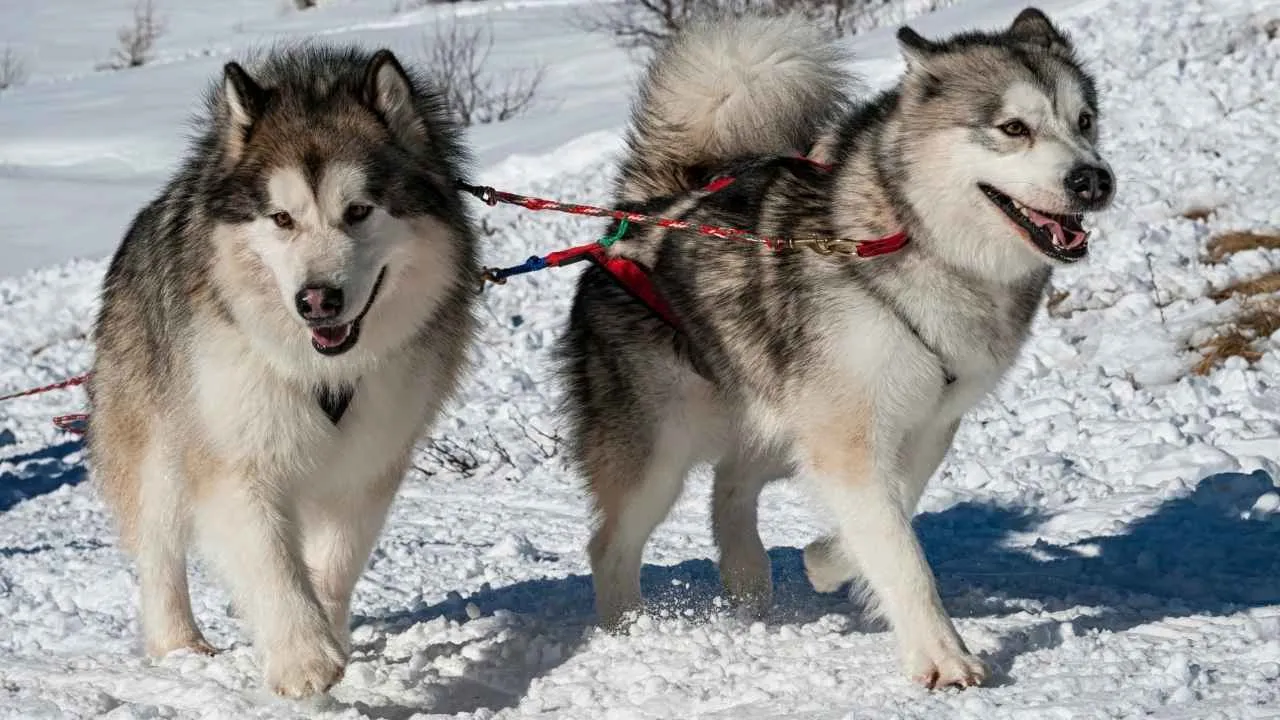
Alaskan Malamutes are true winter warriors, bred in the harsh climates of Alaska, where temperatures can plummet to -30°F (-35°C). The breed name was taken from the ancient Mahlemuts tribe that settled along the shores of Kotzebue Sound in northwestern Alaska. These large, powerful sled dogs have thick, coarse coats that keep them cozy in winter conditions, making them perfect companions for snowy adventures.
Their broad, bear-like paws help them grip icy surfaces and spread their weight so they don’t sink into the snow — a clever adaptation for life in the Arctic states AKC.
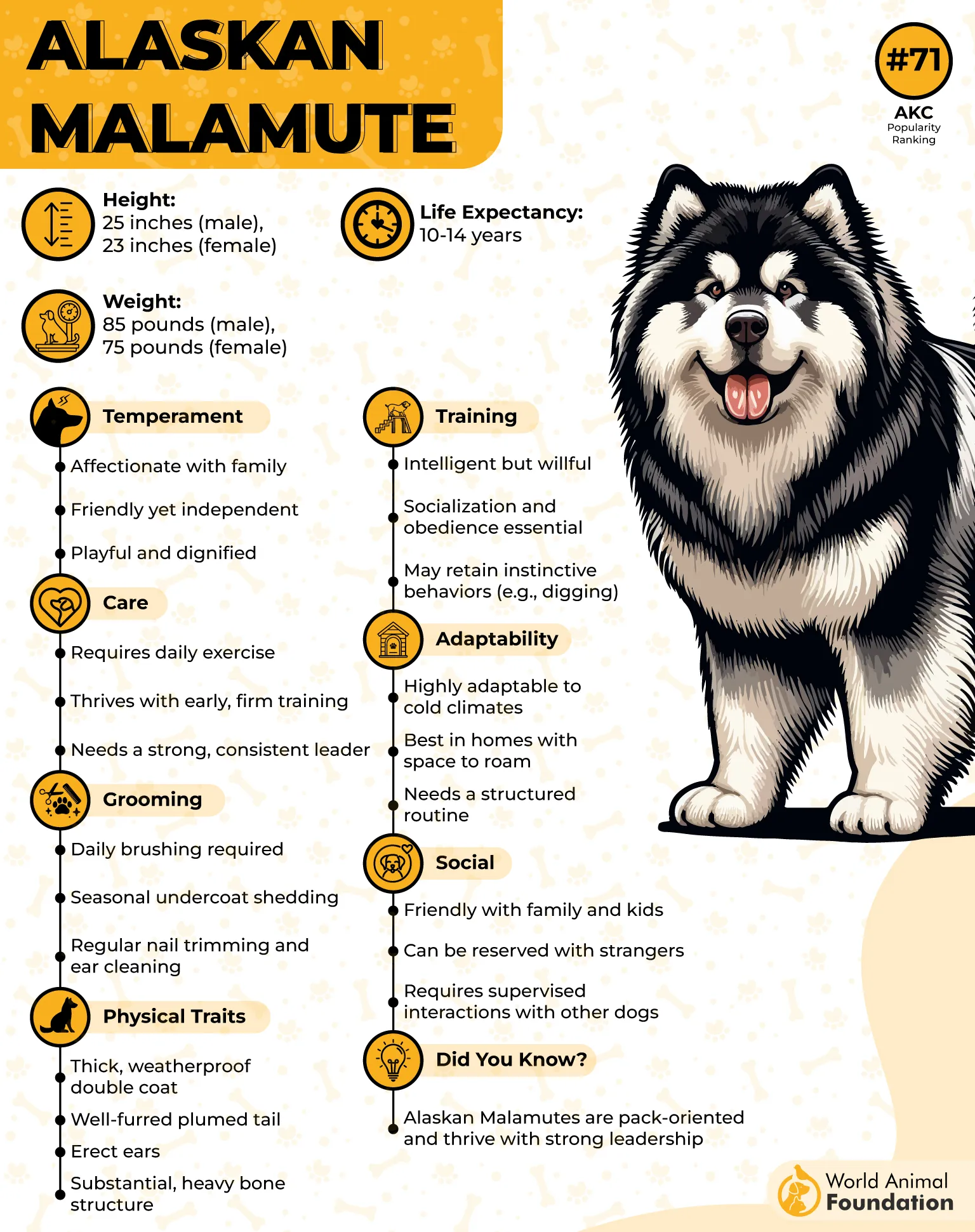
Known as the “Clydesdale of the Great White North,” Alaskan Malamutes have a distinctive look: a broad head, erect triangular ears, and a plume-like tail they often curl over their faces to keep warm. Standing 23 to 25 inches tall and weighing between 75 and 85 pounds, these dogs are built for strength and endurance.
Though affectionate and loyal to family, Alaskan Malamutes can be strong-willed and independent, which means training requires patience and consistency. They love sledding and pulling work and pick up those skills quickly, but their playful and sometimes mischievous nature means they might not be the best fit for very young kids or seniors.
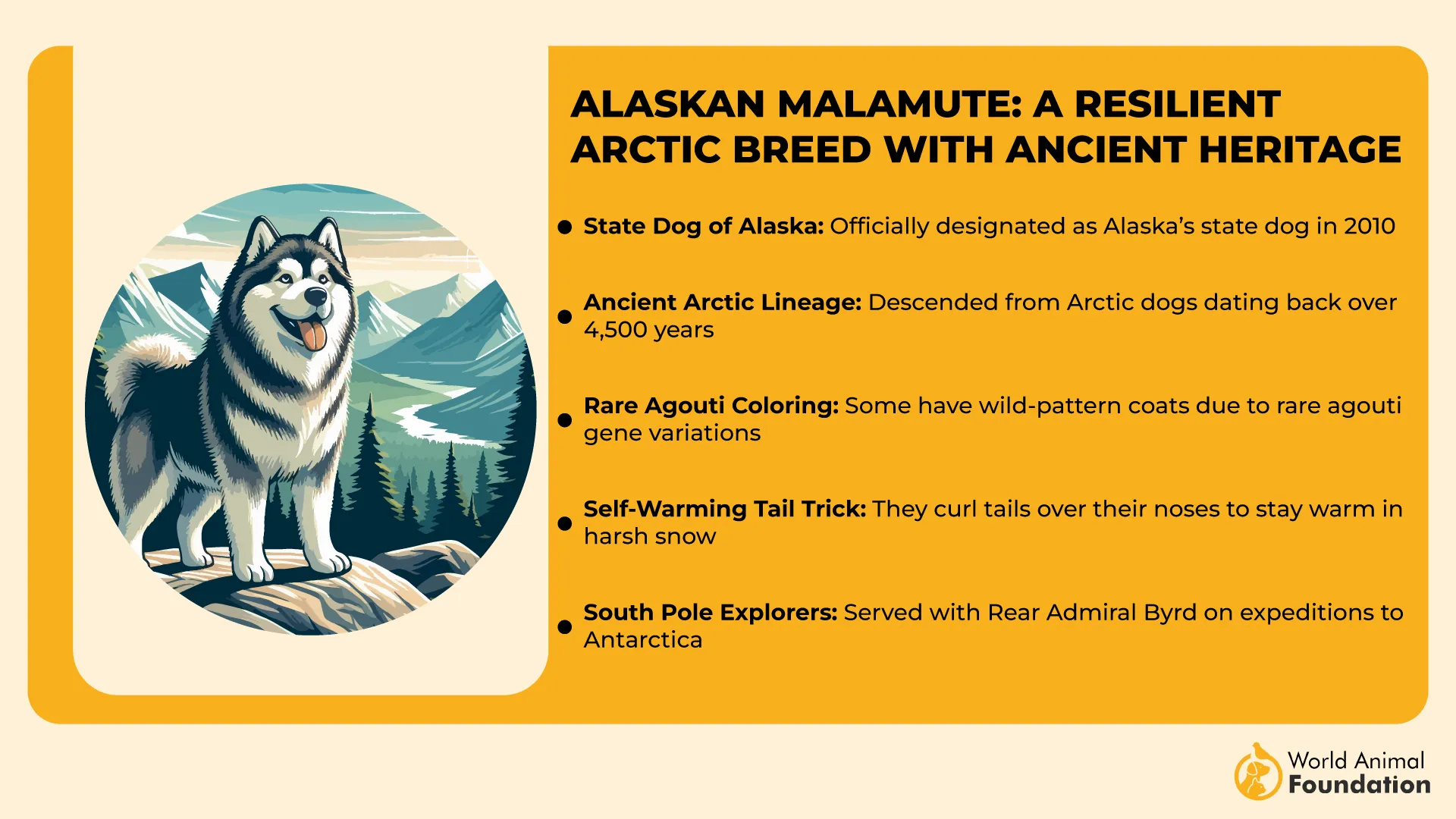
With proper socialization, they get along well with people but can be wary of unfamiliar dogs. These spirited pups need plenty of exercise and mental stimulation to stay happy and healthy in your cold-weather adventures.
2. Saint Bernard
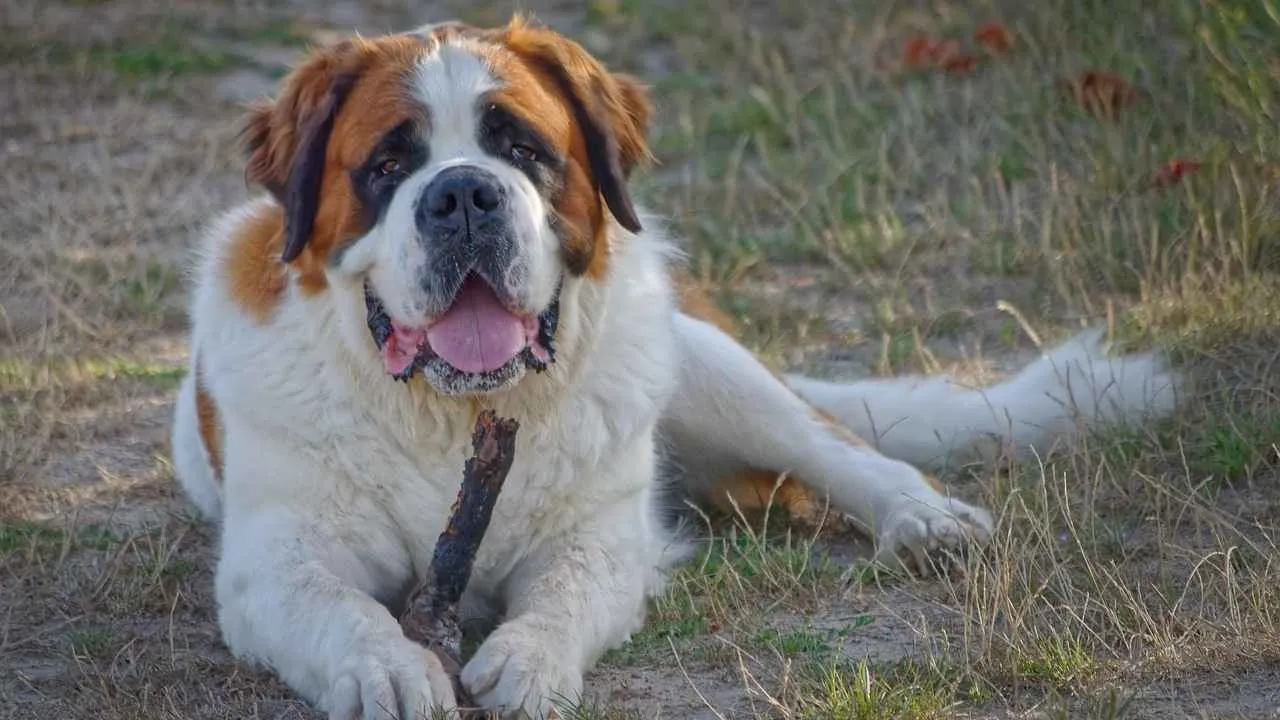
Saint Bernards were born to brave the snowy, treacherous mountain passes of the Swiss Alps. For centuries, these gentle giants worked alongside monks at the Great St. Bernard Hospice, tirelessly searching for lost or injured travelers.
With an extraordinary sense of smell, impressive endurance, and a natural love for cold weather, they became legendary rescue dogs. Their thick fur and body heat provided much-needed warmth to those stranded in the snow, and though the tales of them carrying brandy barrels might be more legend than fact, their bravery and resilience are very real.
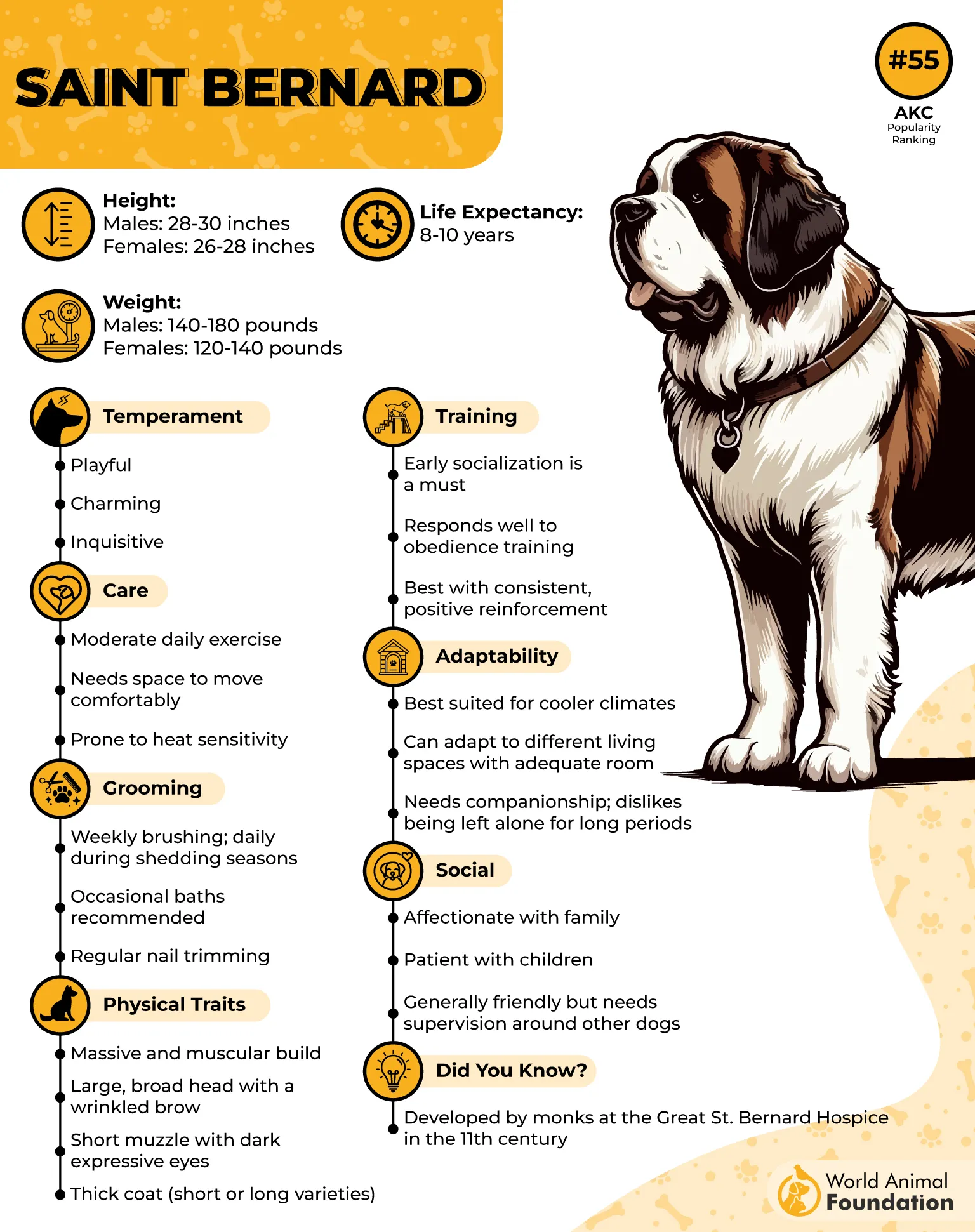
What makes Saint Bernards so well-suited for cold climates? First, their thick double coat acts like nature’s winter jacket — a dense undercoat traps warmth, while the longer outer layer repels snow and moisture.
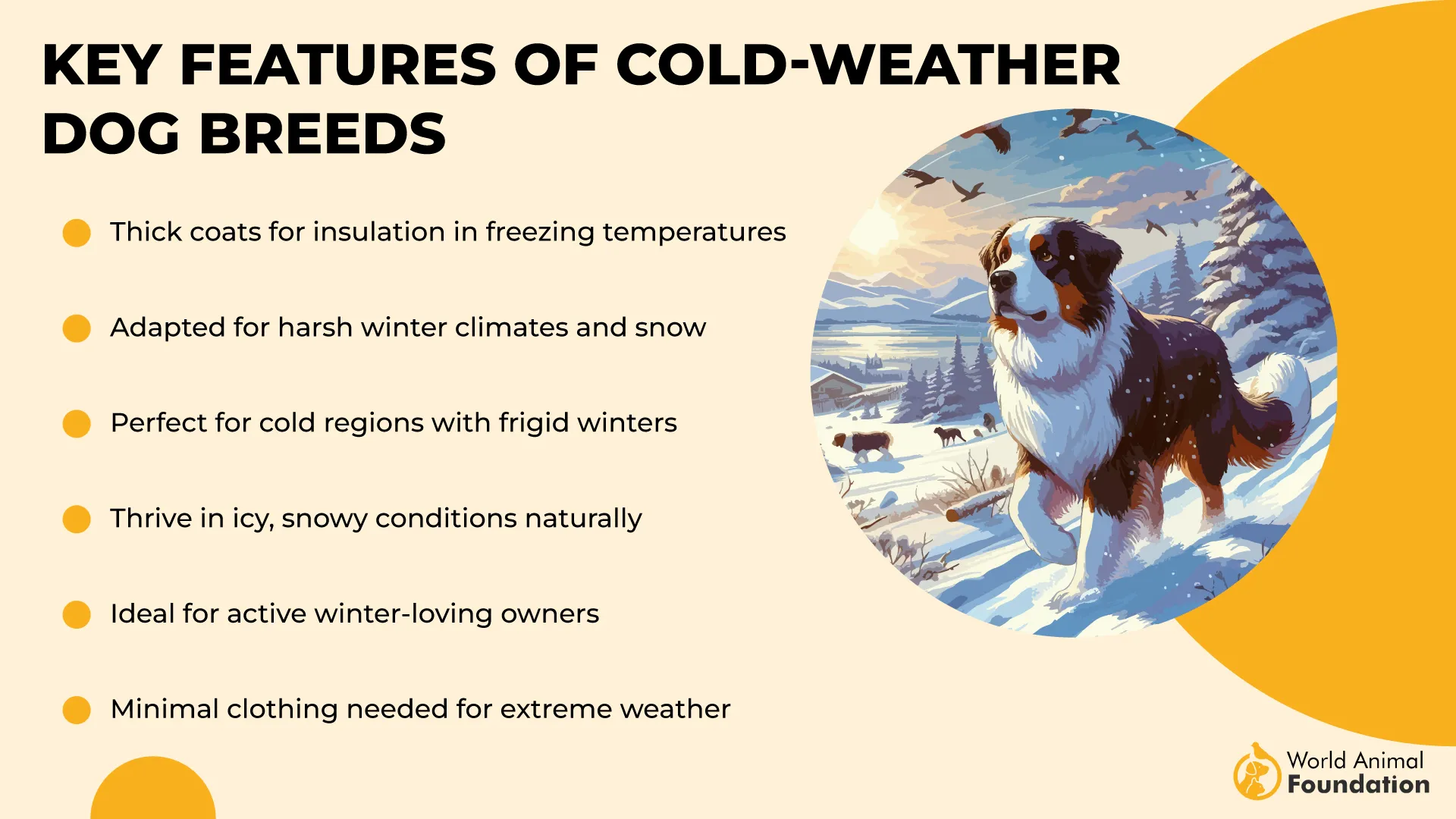
Their large, powerful bodies, weighing between 120 to 180 pounds, help them power through deep snow without getting chilled quickly. Plus, the dog’s paws work like snowshoes, spreading their weight and preventing them from sinking into soft snow.
These dogs were not just bred to rescue people—they were also early warning systems. Monks relied on them to detect incoming snowstorms and avalanches. The dogs could dig through ice to find buried travelers, keeping them warm until help arrived. Meanwhile, another Saint Bernard would race back to the hospice to alert everyone.
Did you know?
Over the years, these incredible dogs saved more than 2,000 lives, proving their place as true champions of the cold.
3. Norwegian Elkhound

The Norwegian Elkhound is more than just a fluffy face—it’s a piece of living history. These bold, medium-sized dogs have been loyal companions since Viking times, known for their fearless spirit and deep bond with humans.
With their perky ears, thick silver-gray coats, and ever-alert attitude, Elkhounds—often affectionately called “Elkies”—were once prized hunting partners, tracking moose and elk across snowy forests. Today, they’re just as happy tagging along on winter hikes or backyard snowball fights, thriving in cold climates that match their rugged roots.
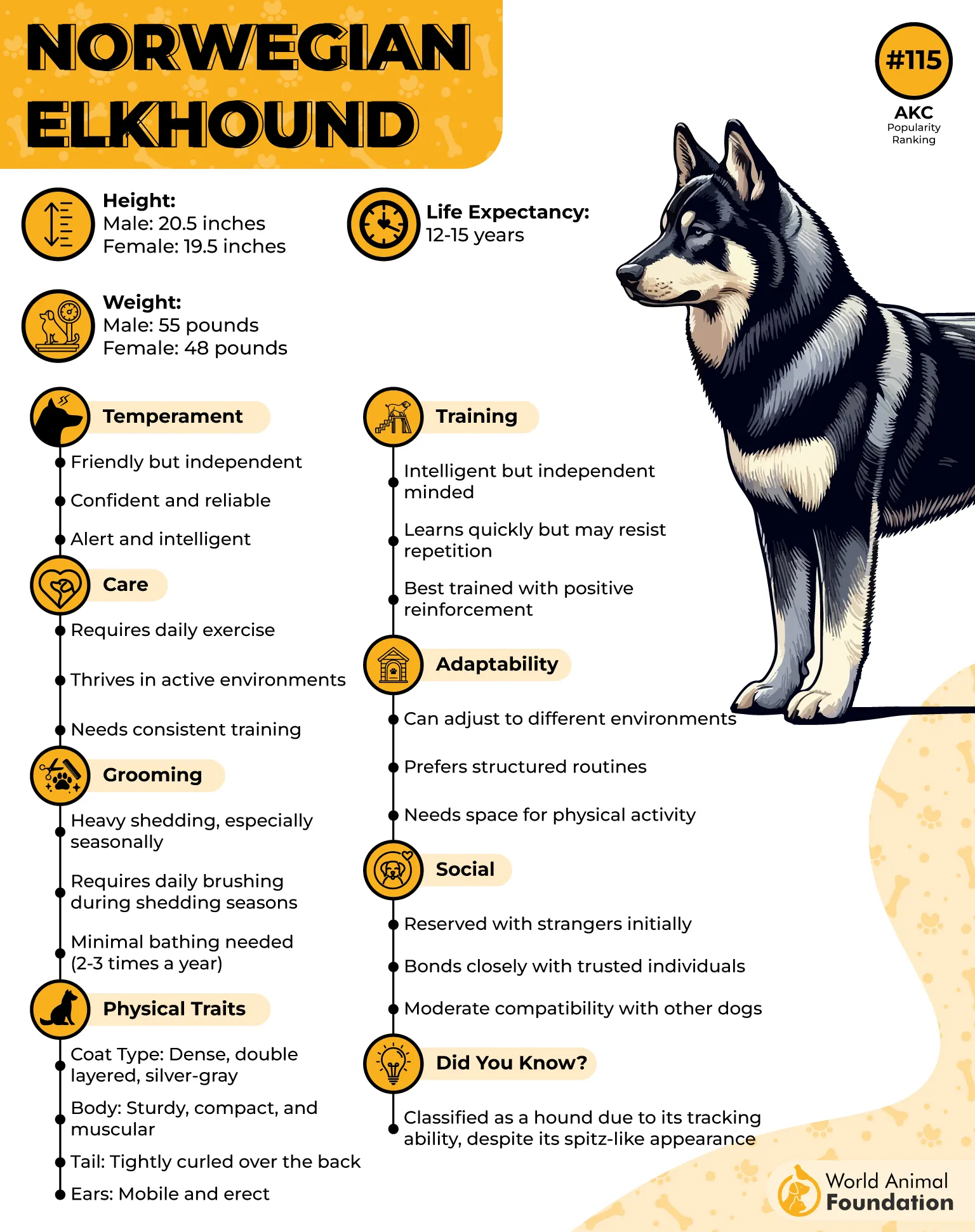
Weighing between 45 and 57 pounds and standing around 19 to 20 inches tall, the Norwegian Elkhound is built for chilly outdoor life. Their thick coats insulate them beautifully, and unique adaptations—like extra fat on their paw pads—help prevent frostbite by slowing the freezing process. It’s no wonder they’re happiest when there’s snow on the ground and crisp air to breathe.
On the rarer end of Norway’s winter-loving pups is the Norwegian Lundehund. Ranking 197 out of 197 in AKC’s breed list, this pint-sized wonder was originally bred to climb steep cliffs and retrieve puffins.
The Lundehund is unlike any other dog, with six toes per foot, bendy shoulders, foldable ears, and a neck that can bend backward until its head touches its spine—all evolutionary superpowers designed for life on rocky ledges.
Back in the day, these clever dogs could catch up to 80 puffins daily, and they were once so valuable that a household would treasure them more than a cow. Today, while their puffin-hunting days are mostly behind them, their skills live on in new ways, like helping Norwegian airports reduce bird strikes by locating and clearing seagull nests.
4. Tibetan Mastiff
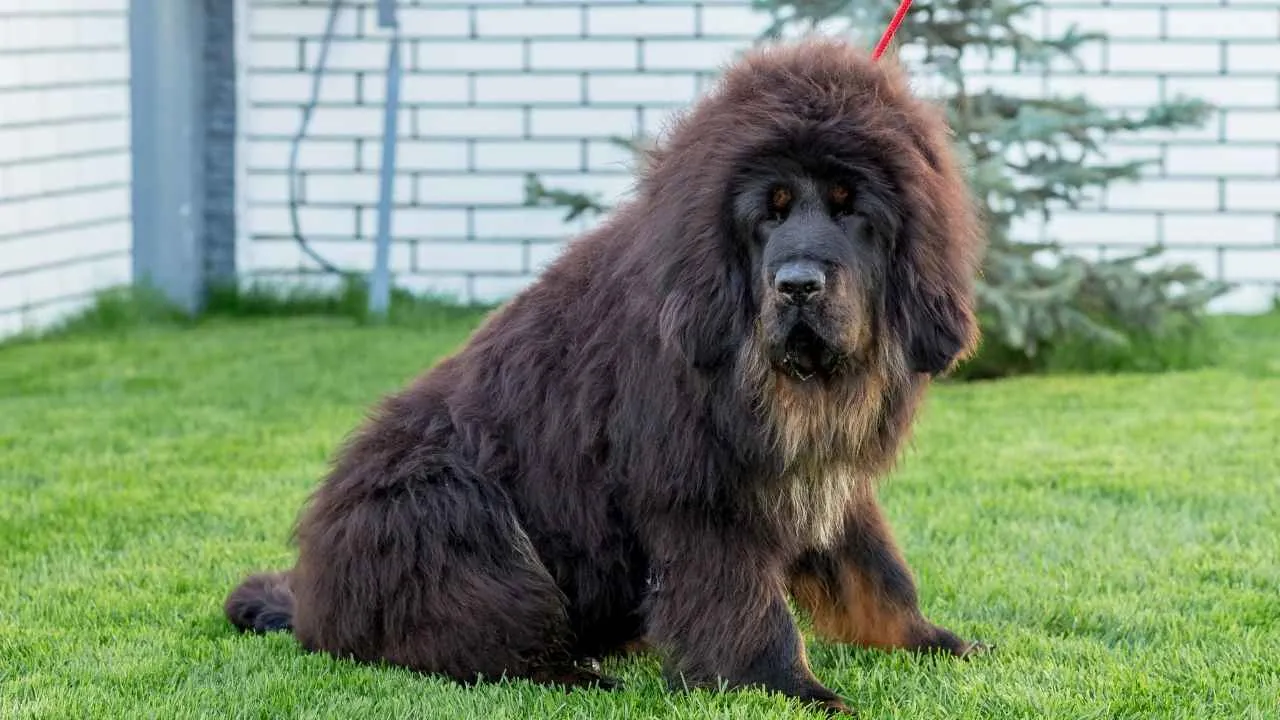
The Tibetan Mastiff is a majestic mystery wrapped in fur. With ancient roots in the remote Himalayan mountains, this powerful breed has long guarded everything from villages and flocks to sacred monasteries.
Tibetan Mastiffs are believed to descend from mastiff-like dogs, splitting into two distinct types: the Do-Khyi, which lived with nomadic tribes and guarded livestock, and the Tsang-Khyi, the larger variety gifted to monasteries to protect monks and spiritual dwellings. Some even say they traveled the world with Alexander the Great!
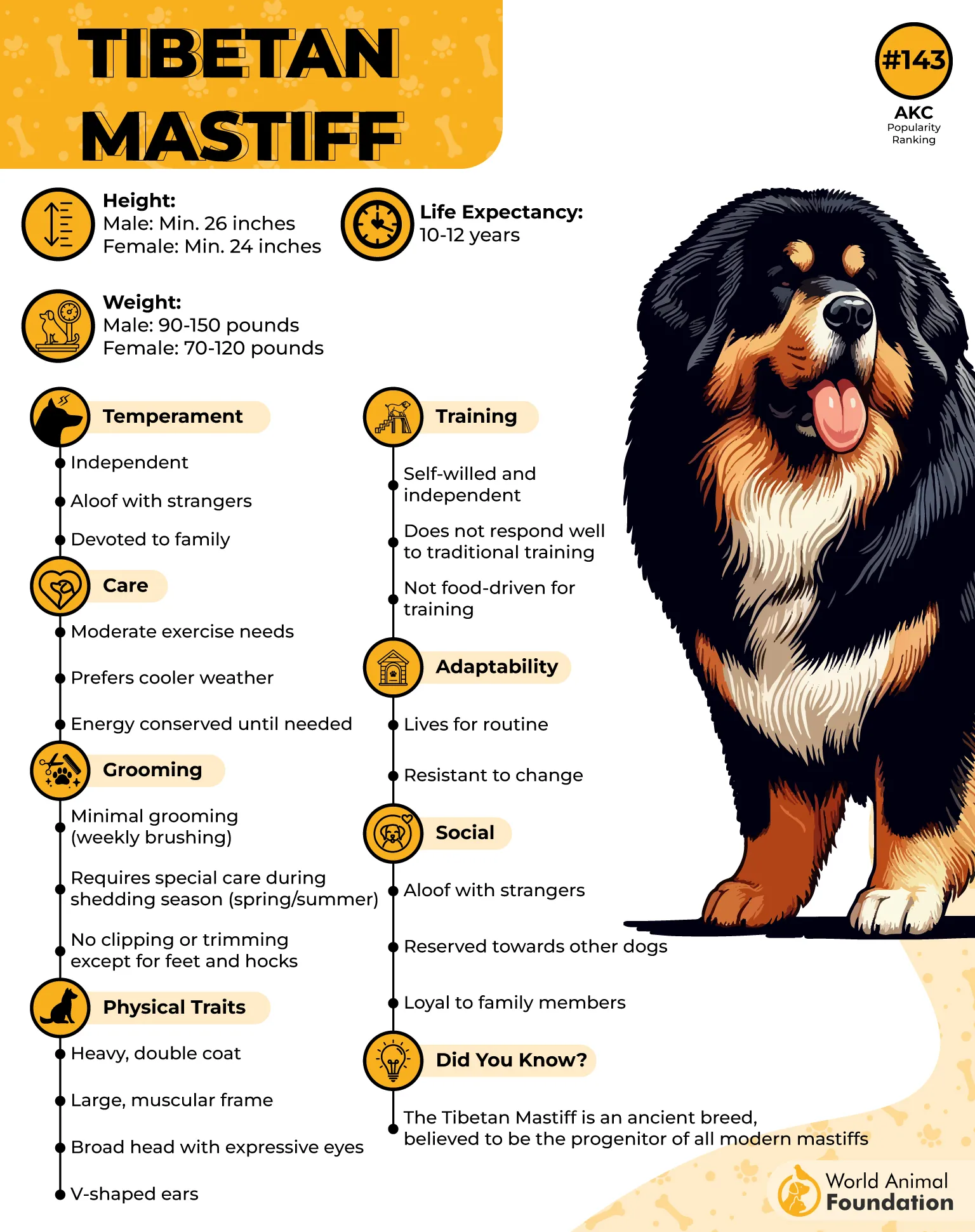
Tibetan Mastiffs are impressive giants. With a lion-like mane, broad head, strong build, and feathered tail that curls over their back, they can weigh anywhere between 70 and 150 pounds. Their thick double coat—coarse on top and woolly undercoat helps them stay warm in frigid temperatures. They “blow” their coat in a dramatic seasonal shed.
Despite their imposing presence, Tibetan Mastiffs are deeply loyal and affectionate and make great family dogs. They tend to be cautious around strangers, observing quietly before engaging. Though they enjoy lounging indoors, they become more alert and watchful at night, often barking to signal anything unusual.
These dogs aren’t suited for apartment living. They thrive in spacious, fenced yards where they can move freely and stay mentally engaged. Without enough space or stimulation, they may resort to digging or chewing out of boredom. With the right environment and experienced owner, the Tibetan Mastiff is a devoted and formidable guardian.
5. Bernese Mountain Dog
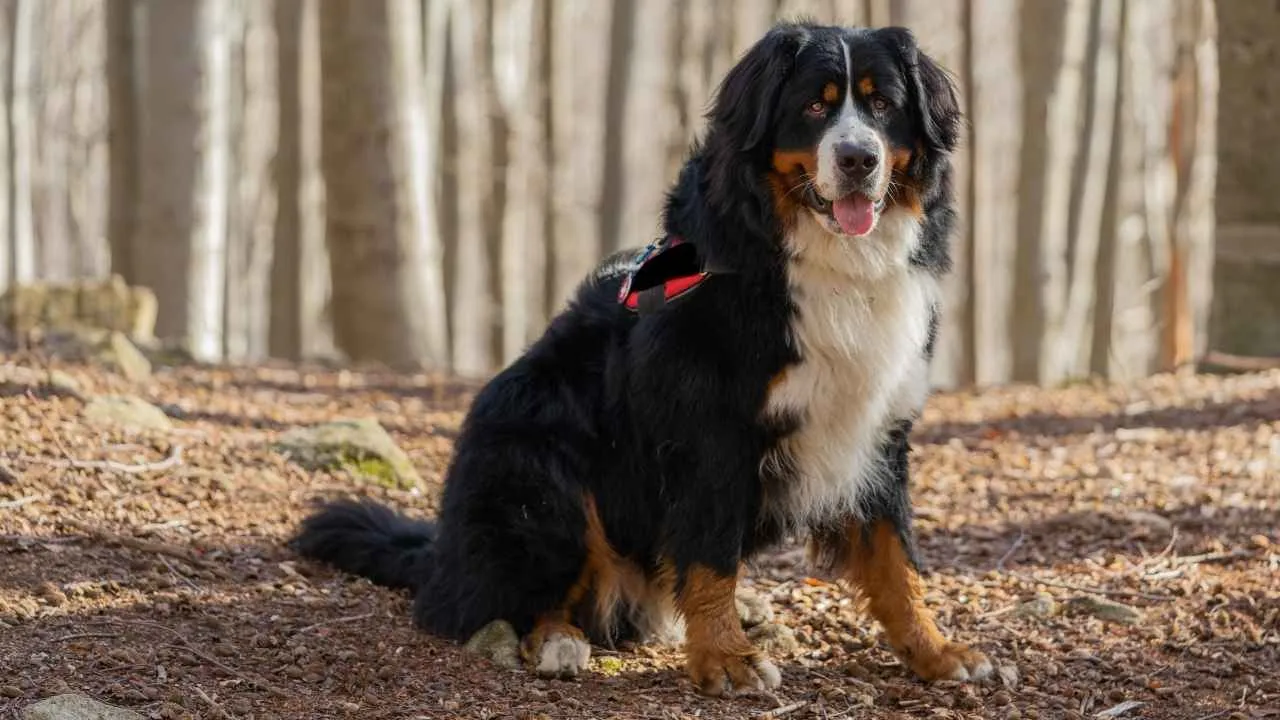
The Bernese Mountain Dog, affectionately called the “Berner,” is a gentle giant with a hardworking history. Brought to Switzerland over 2,000 years ago by the Romans, this hardworking breed became essential farm helpers—pulling carts, hauling heavy loads, guarding property, and driving cattle across rugged mountainous regions.
With their calm temperament and strong work ethic, Berners quickly earned their place as beloved companions in the Swiss Alps.
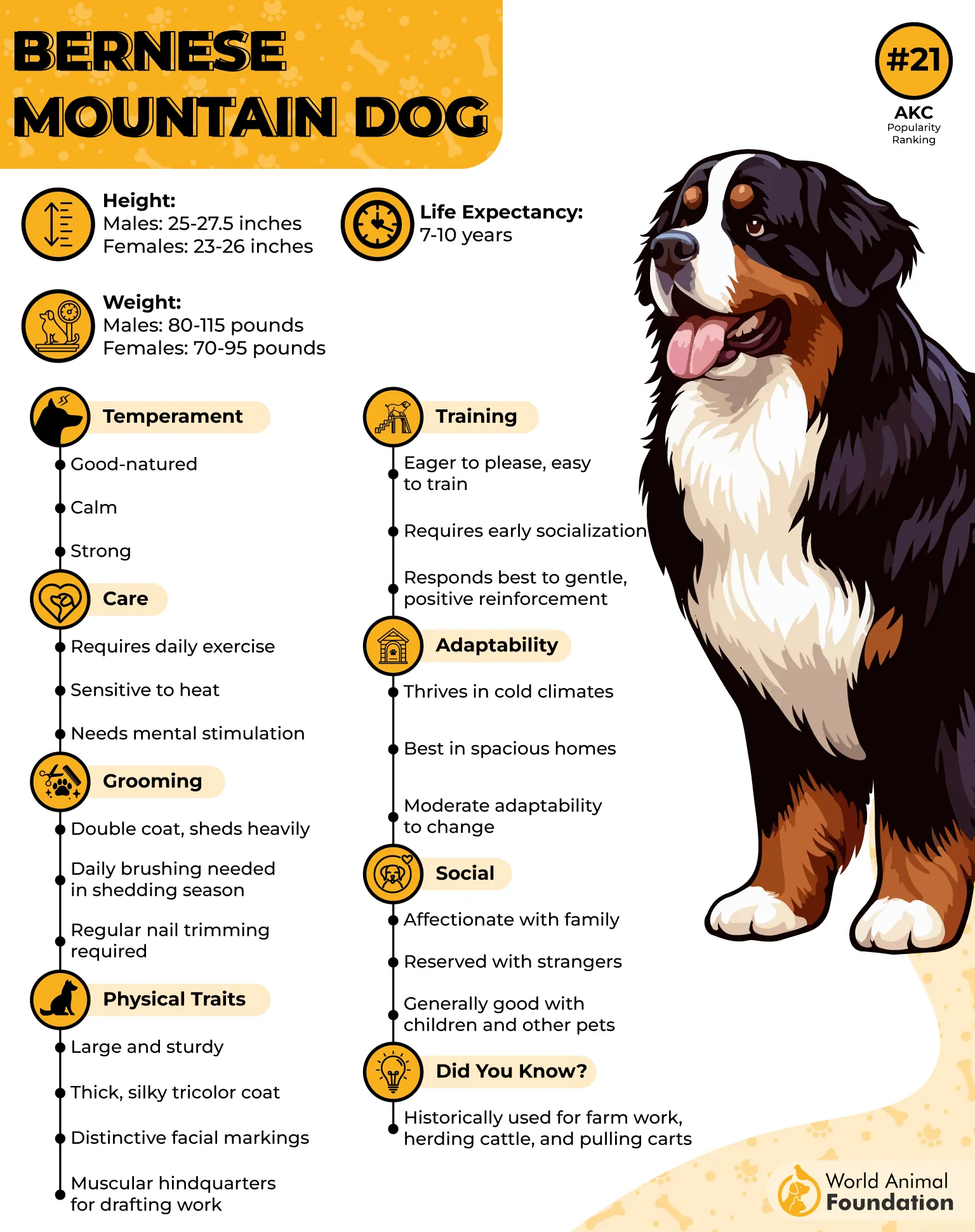
With their long, silky coats and dense underlayers, Bernese Mountain Dogs are built for cold weather. Their fur provides excellent insulation, while the outer layer repels snow and moisture. Add their tri-color markings and soulful eyes, and it’s easy to see why they’re so beloved.
Despite their size, Berners are gentle and affectionate. They enjoy snowy playtime, but winter adventures should be balanced with limited exposure to extreme cold. A slight increase in food may be needed during colder months, just enough to maintain warmth without overfeeding.
Historically used for draft work, Berners remain strong, loyal, and eager to help. Whether pulling a sled or snuggling by the fire, they carry the same dependable spirit that once made them indispensable on Swiss farms.
6. Samoyed
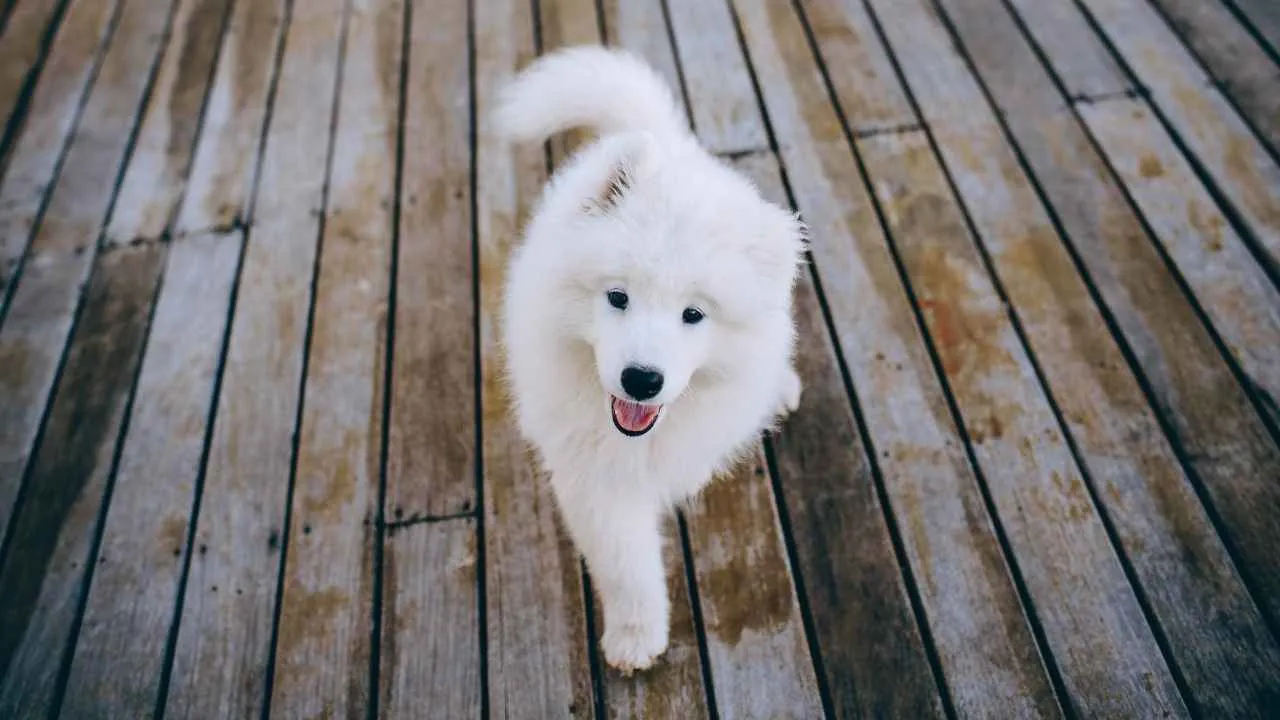
The Samoyed is a popular dog breed, a cloud-like companion known for its pure-white fluff, perky curled tail, and that ever-charming “Sammy smile.” Originally bred by the nomadic Samoyede people of northwestern Siberia, these dogs weren’t just pretty—they were essential workers.
Built for extreme cold temperatures, Samoyeds boast a dense, double-layer coat that’s both practical and eye-catching. The outer coat is long and straight, designed to repel snow and dirt, while the soft, woolly undercoat insulates against freezing temperatures.
Even their signature smile serves a purpose—it keeps drool from forming icicles in subzero weather. That combination of function and beauty helped the breed earn official recognition from the American Kennel Club in 1906.
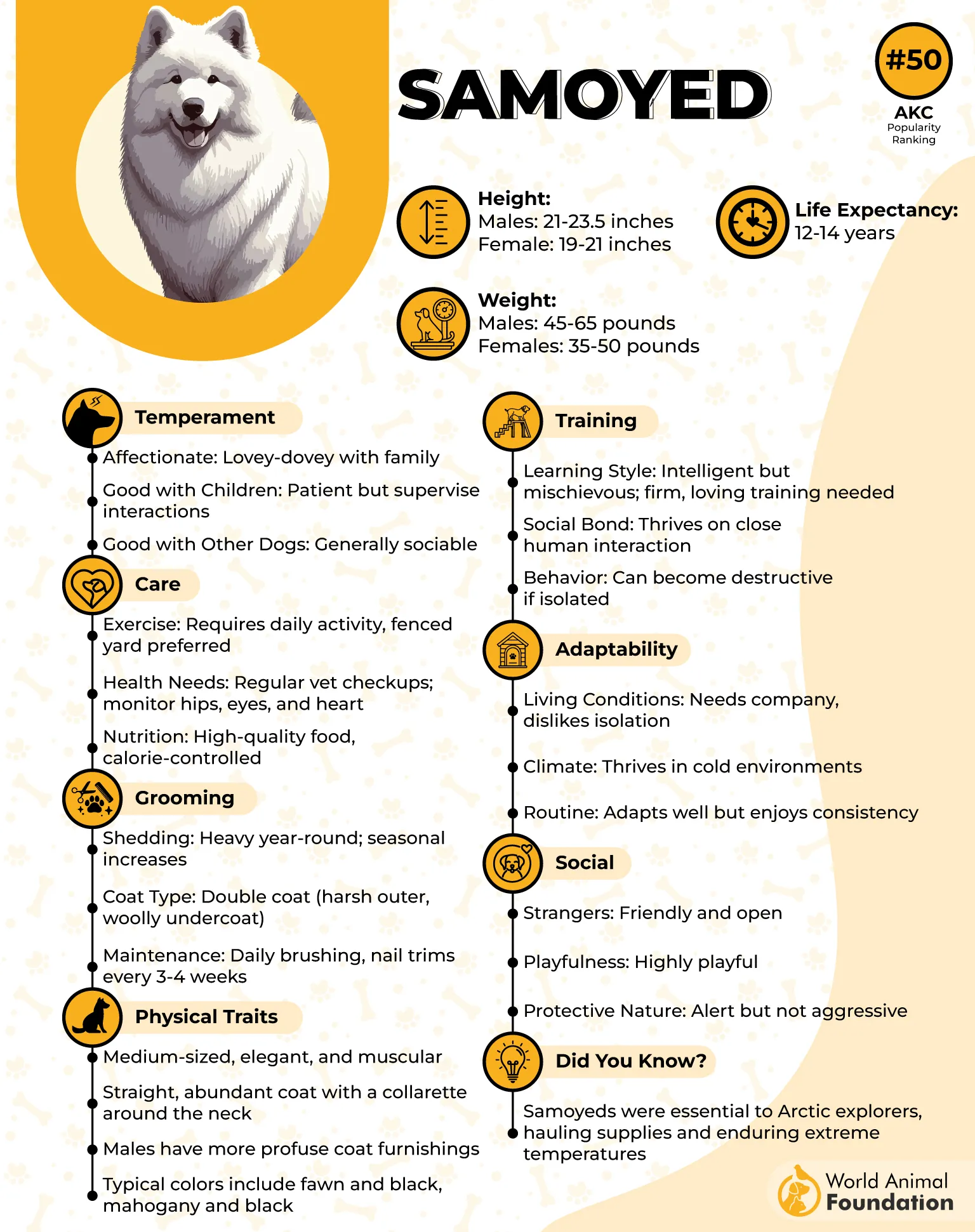
Though bred as working dogs, Samoyeds easily adapt to family life. They love attention, join in on all activities, and bring playful energy to any home. While affectionate and great with all ages, their independence can lead to mischief if they’re bored—so consistent, positive training is a must, states Britannica.
Sociable and friendly breed, Sammies are more likely to greet guests than guard against them. They make good watchdogs, often barking to alert you, but not ideal for protection. Without enough attention or stimulation, they may dig or bark excessively, so daily engagement is essential.
As an added bonus, Samoyeds are famously clean, so much so that they’ve earned the nickname “Teflon dog” because dirt and mud slide right off that glorious coat. A loyal, joyful companion, the Samoyed brings a bit of Siberian sparkle to every home.
7. Great Pyrenees
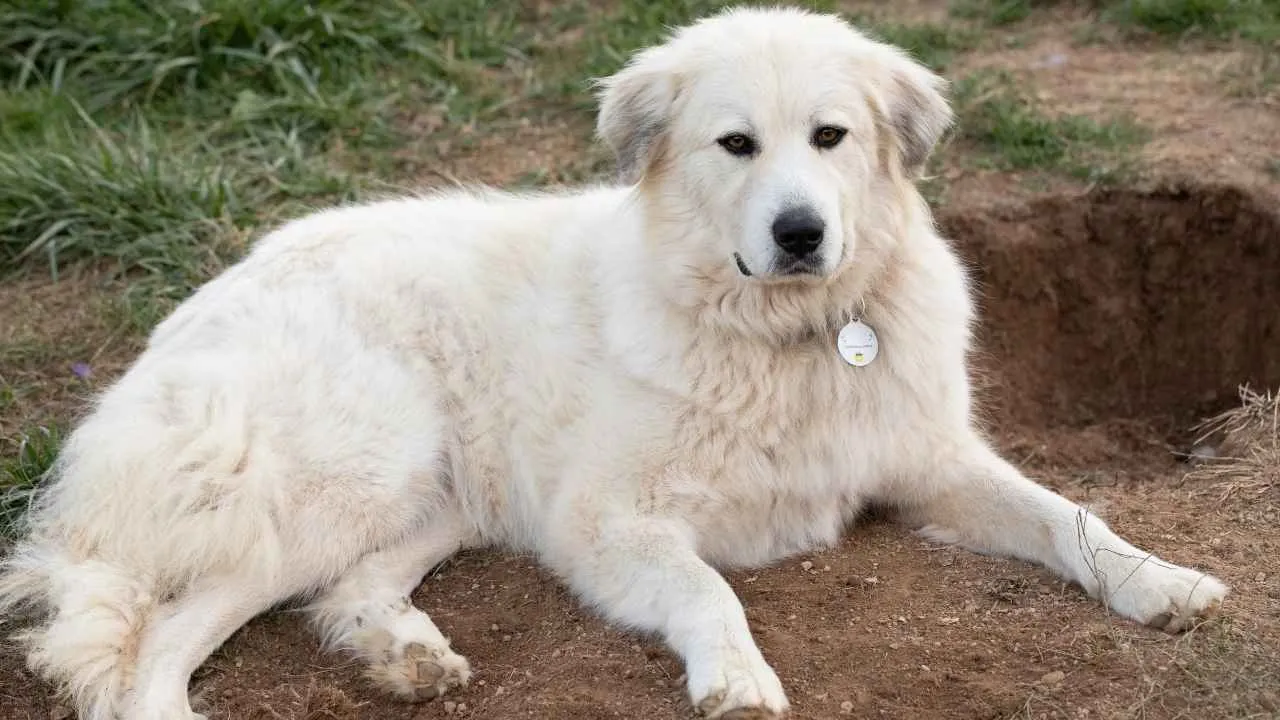
The Great Pyrenees is is mighty and majestic breed—a gentle giant with a deep-rooted instinct to protect and nurture. Originally bred to guard flocks from predators like wolves and bears in the snowy Pyrenees Mountains along the France-Spain border, this breed has long been a steadfast companion to shepherds.
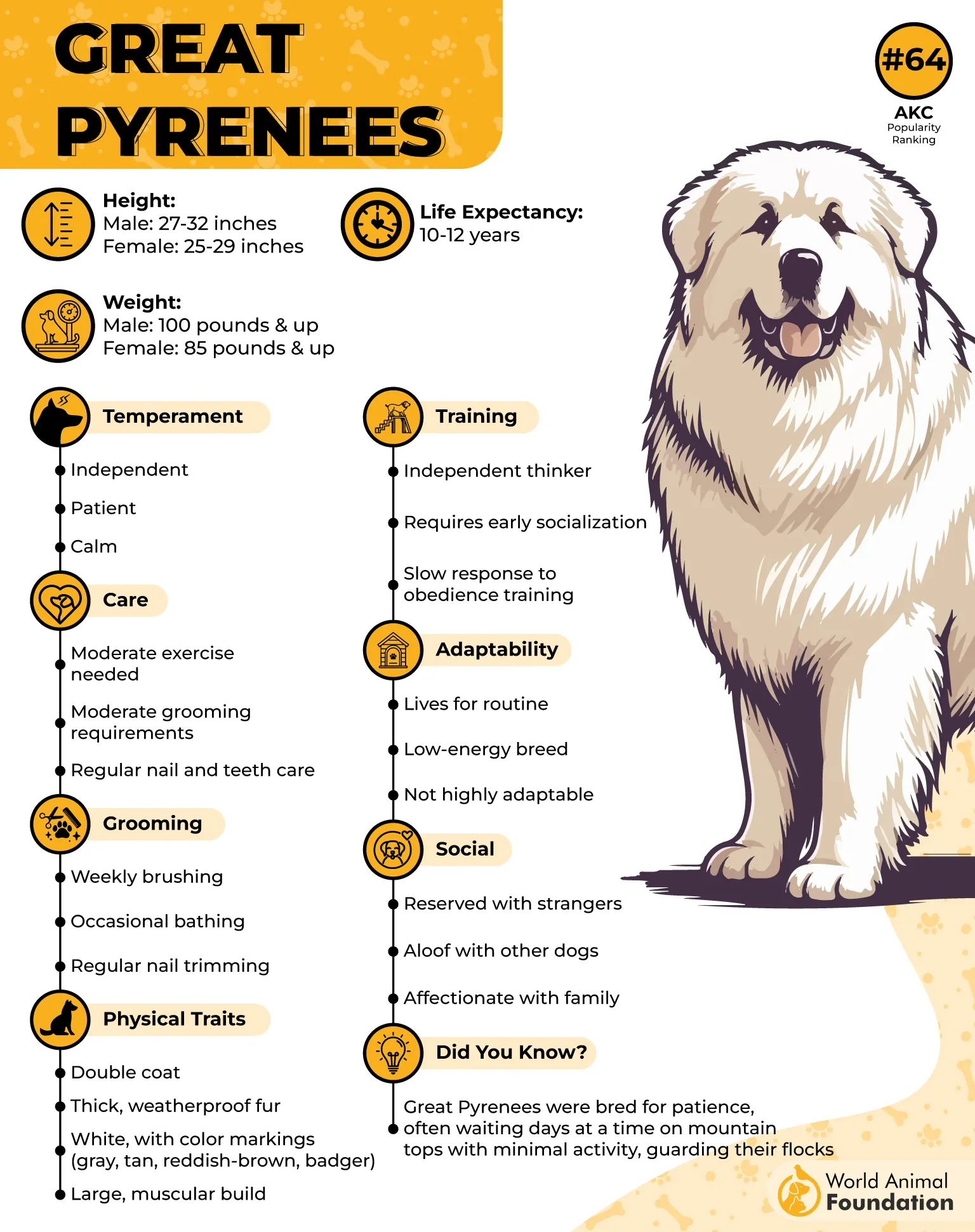
Standing up to 32 inches tall and weighing over 100 pounds, this majestic breed makes an impression with both size and poise. Though typically serene, they react swiftly and decisively to threats. Their lush white coats may carry hints of gray, tan, reddish-brown, or badger, adding to their distinguished appearance, states WebMD.
With thick, weather-resistant coats and a calm, observant nature, the Great Pyrenees was built to endure and patrol rugged mountain terrain.
More than just protectors, Pyrs are instinctively nurturing. They care deeply for their flock—and their human families—showing patience and gentleness, especially with children. However, their independent nature requires early training and consistent socialization to ensure they remain well-mannered.
These dogs thrive in cooler climates and may struggle in heat. On warm days, they often dig to find cooler ground, a natural habit that helps them stay comfortable.
Interestingly, the Great Pyrenees are naturally nocturnal—a trait inherited from centuries spent watching over flocks at night. Don’t be surprised if your Pyr barks after dark; it’s just their way of standing guard, even while the rest of the world sleeps.
Fun Fact:
Fossils of the Great Pyrenees have been discovered dating back to between 1800 and 1000 B.C., with ancestors possibly originating as early as 11,000 years ago. That kind of heritage doesn’t just make them an ancient breed—it makes them legendary.
Conclusion
When it comes to thriving in low temperatures, not all dogs are created equal. Cold-weather dog breeds like the Siberian Husky, Chow Chow, and Greater Swiss Mountain Dog are built for the chill, with thick coats, sturdy builds, and a natural tolerance for icy conditions.
From the Newfoundland, known for water rescues today, to the energetic American Eskimo Dog and the ever-loyal German Spitz, these breeds are some of the best dogs for snow-loving, active families.
Whether it’s navigating icy waters, trekking long distances, or keeping watch in the snow-covered mountains of northern Japan or Northeast Asia, these dogs are as capable as they are charming. Even small breeds like the German Spitz or pups with thick ears offer surprising cold-weather resilience.
So, if you’re looking for a four-legged friend who won’t shy away from the snow, consider one of these cold-weather dogs. Just be sure their needs match your lifestyle—some are high-energy snow lovers, while others, like the low-energy but warm-hearted breeds, are happy just being near you. Whether big or small, guardians or goofballs, these dogs are perfect for households that embrace the chill.


